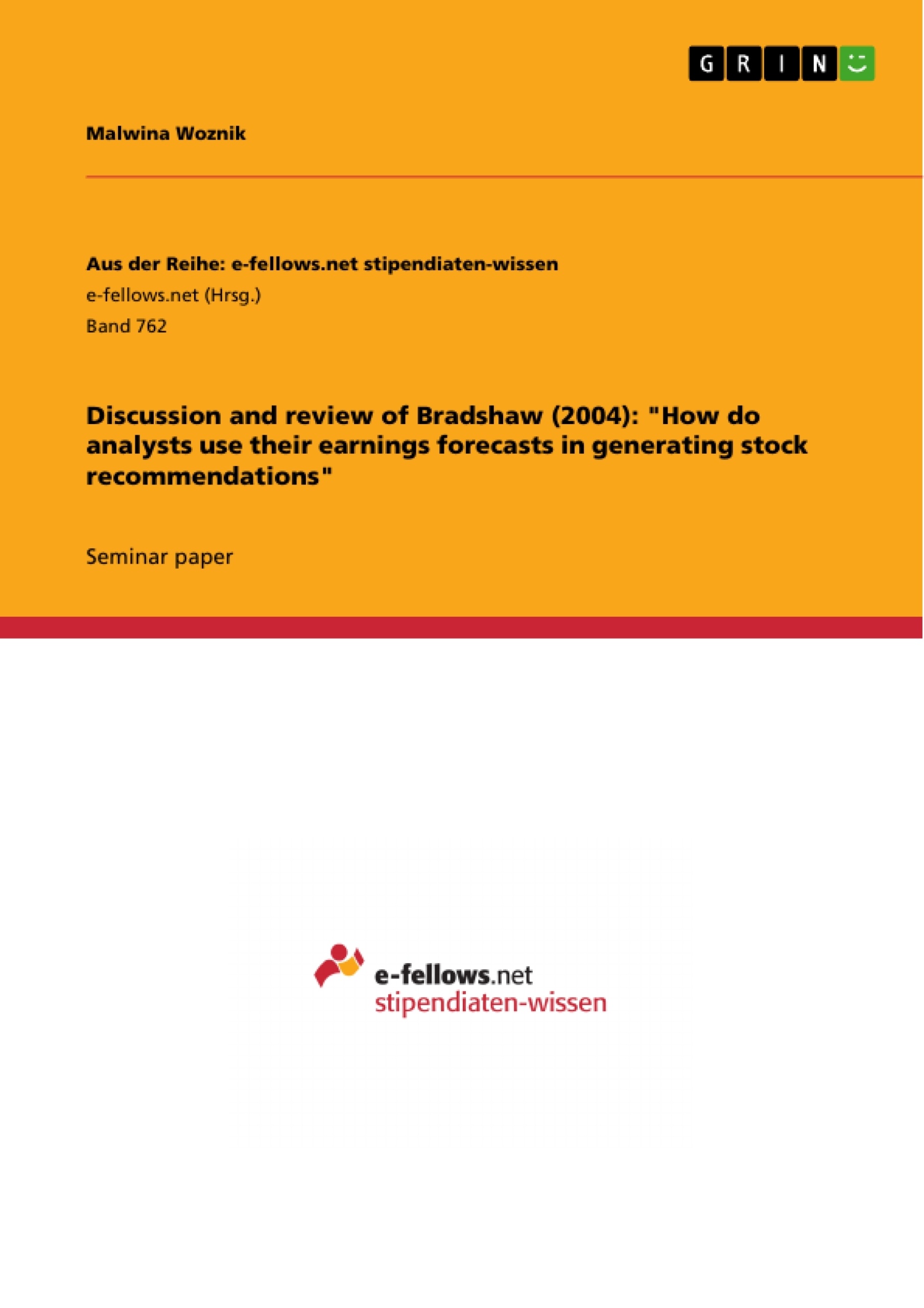Since the beginning of the 90s research on issues referring to analysts’ practise grew rapidly to such an extent that even several publications are concerned with giving an overview of this development. Besides the principal-agent problematic between the firm’s managers and the equity investors, investors are dependent on analysts’ information in times where equity trading soared and the trading turnover in 2008 was 35 times higher than in 1980. That is why shareholders are not able to analyse the amount of information regarding a company due to lack of time or ability. Therefore analysts advise investors to make a profitable decision by publishing a report including for instance stock recommendations or earnings forecasts. Another reason why there is so much research about analysts’ practise is the fact that their information influences investors’ trading behaviour. Thus, it is crucial to know how reliable those statements are and accordingly to be able to assess the quality of the outputs. However, to answer the question of analysts’ process of transforming various information of stock recommendations have to be examined in detail.
Recent investigations rather focus on the single properties of analysts’ analyses as earnings forecasts and stock recommendations, but did not connect those two values. Prior studies deal with research questions like the effect of earnings forecasts on the stock prices or the use of stock recommendations to foretell abnormal return. Bradshaw (2004) is the first research paper which follows the question whether there is a link and if so how analysts incorporate the earnings forecasts into their stock recommendation. Because of the importance of Bradshaw (2004), this paper reviews the main issues and embeds them into the existing literature concerning the role of analysts.
The rest of this paper is organized as follows. The first chapter focuses on the character of analysts and potential key input factors which might be used by analysts for issuing recommendations. Then a brief review of Bradshaw (2004) is given to present the main results. This enables a discussion about potential and realized extensions in literature which follows in the third chapter. The final chapter concludes.
Table of Contents
List of Abbreviations
List of Symbols
List of Figures
List of Tables
List of Appendices
1 Introduction
2 Analysts’ practise
2.1 The character of financial analysts
2.2 Key input factors of recommendations
3 Review of Bradshaw (2004)
3.1 Valuation models
3.1.1 Present value models
3.1.2 Heuristic models
3.2 Fundamentals of the research
3.2.1 Hypothesis
3.2.2 Overview of the data
3.3 Statistical analyses and results
3.3.1 Valuation models and stock recommendations
3.3.2 Valuation models and future exceed returns
4 Critical review
4.1 Criticism referring to Bradshaw (2004)
4.2 Possible extensions based on Bradshaw (2004)
5 Conclusion
Appendices
References
- Citation du texte
- Master of Science Malwina Woznik (Auteur), 2011, Discussion and review of Bradshaw (2004): "How do analysts use their earnings forecasts in generating stock recommendations", Munich, GRIN Verlag, https://www.grin.com/document/231304
-

-

-

-
Téléchargez vos propres textes! Gagnez de l'argent et un iPhone X. -

-
Téléchargez vos propres textes! Gagnez de l'argent et un iPhone X. -

-
Téléchargez vos propres textes! Gagnez de l'argent et un iPhone X. -

-
Téléchargez vos propres textes! Gagnez de l'argent et un iPhone X. -

-
Téléchargez vos propres textes! Gagnez de l'argent et un iPhone X. -

-
Téléchargez vos propres textes! Gagnez de l'argent et un iPhone X. -

-
Téléchargez vos propres textes! Gagnez de l'argent et un iPhone X. -

-
Téléchargez vos propres textes! Gagnez de l'argent et un iPhone X.

